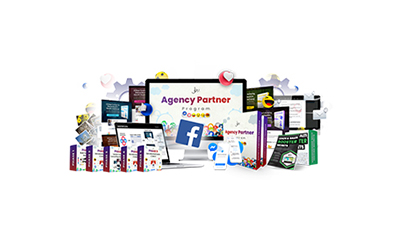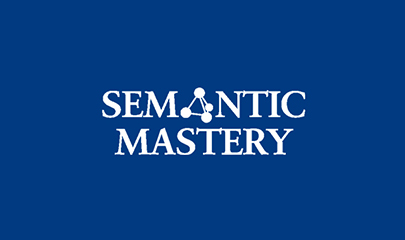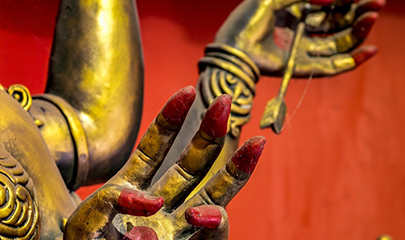-
×
 TikTok Ads Mastery 2024 By Chase Chappell
1 × $23,00
TikTok Ads Mastery 2024 By Chase Chappell
1 × $23,00 -
×
 Free Cloud Sites By BSPE Legal Marketing
1 × $78,00
Free Cloud Sites By BSPE Legal Marketing
1 × $78,00 -
×
 White Phoenix’s The Smart (Money) Approach to Trading By Jayson Casper
1 × $39,00
White Phoenix’s The Smart (Money) Approach to Trading By Jayson Casper
1 × $39,00 -
×
 AI NSFW Mastery - Unlock the Secrets of AI Porn! By Only AI
1 × $23,00
AI NSFW Mastery - Unlock the Secrets of AI Porn! By Only AI
1 × $23,00 -
×
 AI Money Bots System By Stas Prokofiev
1 × $23,00
AI Money Bots System By Stas Prokofiev
1 × $23,00 -
×
 Selections in Photoshop By Colin Smith
1 × $5,00
Selections in Photoshop By Colin Smith
1 × $5,00 -
×
 Million Dollar Masterclass By Eileen Wilder
1 × $85,00
Million Dollar Masterclass By Eileen Wilder
1 × $85,00 -
×
 Agency Partner Program By Jason Wardrop
1 × $15,00
Agency Partner Program By Jason Wardrop
1 × $15,00 -
×
 8D Lip Design eLearning Fillers Course By Tim Pearce
1 × $241,00
8D Lip Design eLearning Fillers Course By Tim Pearce
1 × $241,00 -
×
 Sacred Success Coaching Method By Eden Carpenter
1 × $139,00
Sacred Success Coaching Method By Eden Carpenter
1 × $139,00 -
×
 POFU Live 2021 (4th Edition) By Semantic Mastery Crew
1 × $39,00
POFU Live 2021 (4th Edition) By Semantic Mastery Crew
1 × $39,00 -
×
 Web API - JavaScript Fetch getting JSON data Fun with APIs
1 × $6,00
Web API - JavaScript Fetch getting JSON data Fun with APIs
1 × $6,00 -
×
 Adobe Photoshop CC Bootcamp By Blake Rudis
1 × $5,00
Adobe Photoshop CC Bootcamp By Blake Rudis
1 × $5,00 -
×
 RARM - Rapid Anxiety Reduction Method Therapy by Karen Phillip & Wayne Phillip
1 × $31,00
RARM - Rapid Anxiety Reduction Method Therapy by Karen Phillip & Wayne Phillip
1 × $31,00
Building Habits and Loyalty By Roger Dooley
$39,00
SKU: KOB.58032KEb0KP
Category: Personal Development
Tags: Building Habits and Loyalty, Loyalty, Roger Dooley
Building Habits and Loyalty by Roger Dooley – Immediate Download!
Let’s embark on a captivating adventure to uncover remarkable insights that spark your curiosity and elevate your understanding

Building Habits and Loyalty By Roger Dooley
Overview

Building Habits and Loyalty by Roger Dooley
In the ever-evolving landscape of customer relationships and marketing, the concepts of building habits and loyalty have taken center stage. Roger Dooley, a leading voice in neuromarketing, offers invaluable insights into how businesses can effectively engage consumers by understanding the psychological underpinnings of their behaviors. While loyalty programs are often seen as straightforward reward systems aimed at fostering repeat purchases, the reality is far more complex. The interplay between customer motivations, intrinsic and extrinsic rewards, and behavioral psychology reveals a nuanced perspective on what truly cultivates loyalty. By focusing on the psychological aspects of customer engagement and employing strategies that foster genuine loyalty, organizations can not only enhance their customer retention rates but also create lasting emotional connections with their clientele.
Understanding customer motivations in various contexts opens the doors to tailored strategies that can significantly impact engagement and loyalty outcomes. Dooley discusses the importance of crafting powerful customer experiences and acknowledges the need for brands to think beyond transactional relationships. Instead, the goal should be to build a community of loyal advocates who feel a deep-rooted connection to the brand. This article delves into essential aspects, such as the psychological mechanisms driving customer behavior, the habit loop, effective reward systems, and the significance of crafting memorable experiences all aimed at achieving the ultimate goal of unwavering customer loyalty.
Understanding Customer Motivation
Customer motivation acts like a compass guiding individuals toward specific purchases or brand interactions. At its core, motivation can be categorized into two primary drivers: intrinsic and extrinsic. Imagine intrinsic motivation as a flame that burns from within: customers engage with a brand out of genuine interest or enjoyment, like a child playfully exploring a playground. In contrast, extrinsic motivation is akin to a carrot dangled in front of a horse, compelling it to move forward rooted in tangible rewards such as discounts or loyalty points.
A remarkable illustration of this is evident in loyalty programs. For instance, research indicates that programs reliant solely on extrinsic rewards can unintentionally reduce a customer’s intrinsic motivation. If a customer feels their only reason for interaction with a brand is to accumulate points for a freebie, the joy of simply engaging becomes overshadowed by a transactional mindset. This shift underscores the quintessential need for brands to align their strategies with both intrinsic and extrinsic motivations to cultivate deeper relationships with their audiences.
To navigate customer motivations effectively, brands must craft experiences that inspire emotional connections. Tailored experiences create an environment where customers feel understood and valued. As noted in behavioral psychology literature, the emotional resonance of these interactions is pivotal; experiential moments can intensify customer retention rates and enhance overall brand loyalty.
A summary of key motivators shows the interplay of intrinsic and extrinsic drives:
- Intrinsic: Passion for the product or brand, enjoyment derived from the shopping experience, brand affinity, and community engagement.
- Extrinsic: Discounts, rewards points, exclusive promotions, and recognition through tiered loyalty programs.
Understanding these dynamics paves the way for businesses to innovate their approach, establishing not only compelling loyalty programs but also a stronghold of loyal customers who are motivated by more than just immediate gains.
The Psychology Behind Loyalty Programs
Understanding the psychological mechanisms underlying loyalty programs is crucial for businesses seeking to engage customers effectively. Much like a well-crafted narrative, loyalty programs depend on fulfilling a compelling structure engaging the customer from the moment they sign up to the rewarding experience of redeeming their points. In many cases, the design of these programs evokes emotions of belonging and achievement.
Research in behavioral psychology reveals that loyalty programs can effectively stimulate customers’ sense of status, encouraging them to engage more deeply with the brand. Consider a frequent flyer program that offers perks based on tier status. Customers may find the prestige associated with being a “gold” member appealing not just for the material benefits but also for the social recognition it brings. This emotional resonance greatly contributes to their ongoing loyalty.
Moreover, self-determination theory emphasizes how perceived autonomy in engaging with a loyalty program can enhance intrinsic motivation. When customers feel they have a choice in how they earn and redeem rewards, their emotional investment in the brand deepens. For example, allowing customers to customize their loyalty rewards choosing between discounts, exclusive products, or experience-based rewards can significantly increase their enthusiasm for participating in the program.
Additionally, effective loyalty programs leverage psychological principles such as loss aversion the idea that people prefer to avoid losses rather than acquire equivalent gains. When customers perceive that they might lose out on a reward, their motivation to engage escalates dramatically, prompting increased spending and interactions.
In conclusion, loyalty programs harness powerful psychological levers that can transform customers into advocates. Brand loyalty stems from fulfilling emotional and social needs, thus pointing to the importance of crafting experiences that go beyond mere incentives. By integrating these principles into their loyalty frameworks, brands can cultivate meaningful connections with customers, ensuring long-term commitment.
Intrinsic vs. Extrinsic Motivation
Delving deeper into the realm of customer engagement, distinguishing between intrinsic and extrinsic motivations is crucial. Both forms of motivation serve as driving forces that influence how customers interact with brands, though they function quite differently in practice.
Intrinsic motivation refers to engaging in an activity for its inherent enjoyment and fulfillment. Imagine a music lover attending a concert simply to indulge in the beauty of the performance. Similarly, customers may engage with a brand because they genuinely admire its values, aesthetics, or product offerings. This deep-rooted engagement typically results in robust loyalty since it’s driven by personal interest rather than external factors.
Conversely, extrinsic motivation stems from external rewards or outcomes. It resembles the classic scenario of a student who studies hard not for the love of knowledge but for the good grades that lead to scholarships. In the context of loyalty programs, customers might join to receive discounts or earn points that can be redeemed later. While extrinsic rewards can effectively prompt initial engagement, they often fail to sustain long-term loyalty.
A comprehensive understanding of the balance between these motivations can significantly influence customer engagement strategies. Research indicates that when loyalty initiatives focus heavily on extrinsic rewards, they risk undermining intrinsic motivation. If participants perceive rewards as controlling or manipulative, they can become less engaged and potentially disengage after the rewards no longer appeal to them.
Goal Gradient Hypothesis in Customer Engagement
At the core of customer engagement lies the goal gradient hypothesis, which posits that individuals exert more effort as they near a goal. This principle is pivotal when considering how loyalty programs shape customer behavior. When participants see that their efforts are bringing them closer to a reward, they tend to increase their engagement in anticipation of achieving that goal.
For instance, a customer enrolled in a loyalty program may monitor their progress toward an exclusive reward over time. The closer they get to redeeming their points or obtaining a higher tier status, the more likely they are to make more frequent purchases to achieve that goal. The proverbial carrot dangled in front of them generates a sense of urgency, reinforcing their commitment to the brand.
Integrating the goal gradient hypothesis into loyalty program structures can yield substantial benefits for businesses. Brands might create incremental goals within their programs such as mini-rewards for reaching a certain threshold of points thereby boosting customer engagement. By explicitly outlining these incremental pathways to rewards, businesses can entice customers to pursue their goals more vigorously.
Moreover, the emotional aspect of approaching a goal cannot be understated. As customers draw nearer to a reward, excitement builds, leading to highly impactful emotional experiences. Celebrating these milestones even with small acknowledgments, like personalized messages can enhance the emotional connection customers feel toward the brand, thus deepening loyalty.
In summary, recognizing the dynamics of the goal gradient hypothesis equips brands with the insight needed to implement effective strategies that maximize customer engagement. By facilitating clear pathways to rewards and maintaining excitement throughout the journey, businesses can transform casual participants into dedicated loyalists.
Strategies for Cultivating Habits
Cultivating positive habits is integral to developing long-term customer loyalty. Creating supportive environments and methodologies focusing on habit formation can significantly bolster customer engagement. Here are several effective strategies that brands can adopt to build and reinforce good habits among their customer base:
- Identify Triggers: Understanding the cues that initiate habitual behaviors is crucial. Triggers can include times of day, environmental factors, or emotional states. Brands can leverage this understanding to strategically align their marketing efforts for example, implementing timely notifications when a customer is most likely to engage with their product.
- Start Small: Encouraging small, manageable initial steps can lead to sustainable growth. For instance, offering incremental discounts on first purchases can invite customers to return without overwhelming them with high expectations. The concept of “small wins” cultivates a sense of accomplishment, contributing to the formation of lasting habits.
- Utilize SMART Goals: Setting clear, specific, measurable, achievable, relevant, and time-bound (SMART) goals can clarify what customers aim to achieve. This process can significantly aid habit formation as customers track their progress and remain engaged.
- Engage Consistently: Consistency is vital to habit reinforcement. When customers know what to expect, they are more likely to establish positive routines. For instance, consistent email communication highlighting new products, exclusive promotions, or personalized content can help solidify engagement.
- Implement Reward Systems: Reinforcing behaviors with tangible rewards can motivate customers to form and sustain habits. Efficiently structured rewards whether fixed or variable can enhance connections to the brand, prompting habitual purchases that align with customer preferences.
By applying these strategies systematically, brands can create nurturing environments conducive to habit formation. The potential for increased brand loyalty and customer retention and ultimately, sustained business growth is what makes investing in these initiatives worthwhile.
The Habit Loop: Trigger, Routine, Reward
Understanding the habit loop comprised of the trigger, routine, and reward is critical in shaping consumer behaviors and fostering brand loyalty. In essence, the habit loop provides a framework that can guide consumers smoothly through the cycle of engagement.
- Trigger: A trigger serves as a cue prompting the customer to take action. This could be external, such as receiving an email notification about a sale or a friend’s recommendation, or internal, such as feeling a particular craving. Identifying effective triggers helps brands influence customer behaviors and create opportunities for engagement.
- Routine: The routine is the behavior that follows the trigger. This might involve browsing products, making a purchase, or subscribing to a service. Marketers can optimize the routine by making it as seamless as possible. For instance, enhancing the checkout process on a website to minimize friction can help customers transition from interest to purchase smoothly.
- Reward: After completing the routine, the customer receives a reward. This could be in various forms, including discounts, loyalty points, or exclusive content. Effectively designing the reward is pivotal; it must be desirable enough to encourage customers to repeat the behavior.
One illustration of this loop in action is Starbucks’ loyalty program. Customers may receive a notification (trigger) encouraging them to try a new seasonal drink. Upon ordering (routine), they receive loyalty stars. The anticipation of accumulating these stars further engages them, fostering strong habits around frequent visits an excellent example of the habit loop in practice.
By understanding and harnessing the habit loop effectively, brands can cultivate engagement that shifts from occasional interactions to genuine, habitual relationships. These relationships create a strong foundation of loyalty and set the stage for sustained business success.
Effective Use of Rewards: Fixed vs. Variable
The strategic use of rewards is paramount in crafting effective loyalty programs. When considering the type of rewards to implement, understanding the difference between fixed and variable rewards can influence customer behaviors significantly.
- Fixed Rewards: This type of reward offers customers predictable and consistent benefits for specific actions. For instance, a loyalty program that grants customers ten points for every dollar spent offers certainty. While fixed rewards can effectively encourage initial purchases, they may lead to diminishing returns if customers become complacent. Over time, the excitement surrounding the reward may wane as it becomes an expected outcome.
- Variable Rewards: In contrast, variable rewards introduce elements of unpredictability, where rewards can change in value or occurrence. These rewards tap into the psychological phenomenon known as the variable ratio reinforcement schedule, common in ******** contexts. When customers receive rewards uncertain in timing or magnitude, that unpredictability fuels excitement and engagement. For example, a surprise bonus of loyalty points or a flash sale can create urgency and encourage more frequent purchases.
- Combining Both Types: A balanced approach often yields the best outcomes. Implementing a system where customers initially receive fixed rewards to encourage engagement can help establish routine behaviors. As customers become more familiar with the program, introducing variable rewards can maintain their interest and deepen their emotional connection to the brand.
- Personalized Rewards: Tailoring rewards to individual customers further enhances effectiveness. For instance, recognizing customer preferences and offering rewards that resonate with them creates a sense of personal connection, making customers feel valued. This consideration can prompt higher engagement levels and convert casual customers into loyal advocates.
By employing both fixed and variable rewards strategically, brands can maintain engagement while stimulating habitual buying behaviors. The balance fosters an environment where customers actively participate in loyalty programs and develop lasting connections with the brand.
Designing Habit-Forming Products
The process of designing habit-forming products hinges on understanding the interplay between user experience, emotional connection, and motivated behavior. Roger Dooley emphasizes that effective product design can lead to habitual engagement, transforming casual users into loyal customers. Here are key considerations when crafting such products:
- User-Centric Design: Prioritizing the user experience involves considering customer needs, preferences, and pain points in product design. Utilizing techniques such as user persona creation, journey mapping, and usability testing enables businesses to create products that are not only functional but also delightful to use.
- Create Emotional Connections: Products that evoke positive emotional responses or resonate with customer values are more likely to become habitual. Brands that successfully create emotional narratives around their products can forge stronger connections with their audience, resulting in higher engagement levels. This can involve storytelling, personalized interactions, or even community-building initiatives.
- **Incorporating Fogg’s Behavior Model: This model suggests that behavior is a product of motivation, ability, and triggers. Designing products that simplify the user experience can enhance habit formation. For instance, minimizing the steps needed to achieve a goal on an app can encourage repeated use, as the experience feels rewarding rather than cumbersome.
- Utilizing Gamification Techniques: Implementing gamification elements can make a product more engaging. Techniques such as rewards, leaderboards, and challenges can instill a sense of competition and achievement. Brands like duolingo have successfully engaged users through gamified learning, skewing toward habitual daily interactions.
- Foster Community Engagement: Creating a sense of community around a product can amplify customer loyalty. Encouraging interactions between users through forums, social media, and brand collaborations strengthens relationships and promotes regular engagement.
By focusing on these design principles, brands can craft offerings that naturally integrate into every customer’s daily life. This approach goes a long way in establishing customer habits and fostering feelings of loyalty toward the brand.
Building Customer Loyalty
Building customer loyalty is the linchpin of sustainable business success. It is imperative to nurture meaningful relationships with customers that extend beyond transactional interactions. When customers feel an emotional connection to a brand, their loyalty becomes inherently stronger. Here are essential components integral to fostering customer loyalty:
- Consistent Communication: Regular, transparent communication with customers enhances trust and rapport. Brands that share updates, product launches, and personalized offers foster a sense of belonging among customers.
- Customer Care: Excellent customer service plays a pivotal role in reinforcing loyalty. Actively addressing customer inquiries or complaints and providing timely support demonstrates that their needs are a priority.
- Consistent Brand Experience: Offering consistent experiences across all channels be it online or in-person enables customers to trust the brand’s reliability. This consistency fosters familiarity, encourages repeat purchases, and maintains positive perceptions.
- Customer Engagement: Unlocking avenues for customer engagement through social media, polls, surveys, and feedback mechanisms allows customers to feel heard. Incorporating their insights creates a collaborative relationship and enhances brand affinity.
- Personalization: Tailoring offerings based on customer preferences creates a personalized experience that resonates with individual needs. Marketing efforts that reflect past purchase behavior or interests can make customers feel understood and valued.
The cultivation of customer loyalty should be viewed as an ongoing process rather than a one-time effort. Engaging customers and nurturing their loyalty creates long-term brand advocates who are likely to share their positive experiences with others, thereby amplifying loyalty-driven growth.
Differentiating Between Rewards and Loyalty
A clear differentiation between rewards and loyalty is essential for organizations seeking to build enduring customer relationships. While both concepts are interrelated, they embody distinct principles.
- Rewards-based Programs: These programs incentivize purchase behavior through tangible incentives such as discounts, points, or exclusive offers. They often promote immediate engagement but may lack the emotional connection needed for deep-rooted loyalty. Customers often associate rewards with short-term benefits rather than a broader allegiance to a brand.
- Loyalty Programs: In contrast, true loyalty programs focus on nurturing spontaneous, habitual relationships. They seek to create an emotional bond between customers and the brand, cultivating a sense of belonging or community. Customer behavior is informed by values and experiences, fostering a comprehensive understanding of the brand.
Creating an effective loyalty program revolves around understanding these fundamental differences. It involves blending elements of reward systems with strategies emphasizing emotional engagement, experience, and relationship-building. Dooley’s insights suggest that merging these principles cultivates a comprehensive loyalty ecosystem that promotes not only repeat purchases but also fosters genuine brand loyalty.
Crafting Memorable Customer Experiences
In a world where competition is fierce, crafting memorable customer experiences can be the differentiator that drives loyalty. A remarkable interaction leaves a lasting impression and can turn occasional customers into loyal advocates. To create these experiences, consider the following elements:
- Personalization: Using data analytics to tailor experiences based on customer preferences is fundamental. Personalized recommendations, greetings, and promotions contribute to a feeling of being valued encouraging ongoing engagement.
- Emotional Storytelling: Integrating storytelling elements into brand interactions allows customers to connect on an emotional level. Narratives that resonate, whether it be highlighting a brand’s mission or sharing customer success stories, forge deeper connections.
- Exceeding Expectations: Brands should aim to surprise customers by going above and beyond the norm. Exceptional service, unexpected rewards, or personalized follow-ups contribute to memorable interactions.
- Designing Engaging Touchpoints: Optimizing touchpoints throughout the customer journey ensures that each interaction is seamless, whether in physical locations or digital platforms. Focusing on user experience reduces friction and cultivates emotional connections.
- Feedback Mechanisms: Implementing channels for customer feedback shows that the brand values its customers’ opinions. Listening to feedback and acting upon it builds trust and positions brands as approachable and responsive.
By embracing these elements, brands can elevate the customer experience from ordinary to extraordinary, creating indelible impressions that amplify loyalty and advocacy. The emotional bonds formed during these interactions become a key asset in the strategic landscape of customer retention.
The Role of Apologies in Customer Retention
The importance of effective communication cannot be overstated, particularly concerning managing customer relationships. One vital aspect of this communication is the role of apologies in addressing mistakes and retaining customers. A successful apology can enhance customer loyalty by demonstrating accountability and care. Here are fundamental components for effectively leveraging apologies during customer interactions:
- Acknowledgment of Errors: Accepting responsibility for mistakes can have a transformative effect on customer relationships. Transparency reinforces the notion that the brand values its customers by acknowledging their concerns.
- Empathy and Understanding: Apologies should be rooted in empathy, capturing the emotional impact of the mistake on the customer. Displaying genuine care aids in rebuilding trust and can convert dissatisfied customers into loyal advocates.
- Corrective Measures and Compensation: Alongside a sincere apology, implementing corrective actions reinforces commitment to customer satisfaction. Offering compensation whether through discounts or complimentary services can further enhance resentful feelings and can transform experiences into positive outcomes.
- Continuous Improvement: Using apologies as learning opportunities fosters a culture of improvement. Analyzing feedback to identify recurring issues or trends can guide brands on preventive measures for the future.
By integrating these elements into customer service protocols, brands can turn potential pitfalls into opportunities for enhanced loyalty and connection. Effectively managing mistakes demonstrates integrity, fostering enduring loyalty even in the face of challenges.
Practical Applications
The application of psychological principles in building habits and customer loyalty extends to practical methodologies that brands can implement. Here are key strategies that translate theoretical insights into actionable practices:
- Targeted Incentives: Utilizing customer data to provide personalized incentives yields significant engagement. Tailored offers based on past behavior or preferences can effectively capture attention and drive purchases.
- Gamifying Loyalty Programs: Incorporating game elements into loyalty frameworks like leaderboards and tier levels encourages friendly competition and engagement. Customers enjoy the excitement of competing for rewards, leading to increased interaction.
- Leveraging Social Proof: Displaying testimonials and success stories creates a sense of validity around the brand. When potential customers see the experiences of others, they may be more inclined to engage with the brand and utilize its offerings.
- Emphasizing Shared Values: Brands that align their missions with customer values create deeper emotional connections. Promoting initiatives related to sustainability or social responsibility resonates with customers, positively influencing their engagement.
- Feedback Loops: Continuous feedback mechanisms can improve customer relationship management by providing opportunities for brands to adapt and evolve. Regularly soliciting input and demonstrating responsiveness encourages a sense of investment from customers.
When businesses adopt these practical applications within their operational strategies, they can foster lasting customer habits and loyalty. By prioritizing engagement, value creation, and emotional connections, organizations set the stage for success in today’s competitive marketplace.
Case Studies of Successful Loyalty Programs
A thorough examination of successful loyalty programs provides valuable insights into effective strategies and methodologies that build customer loyalty. Here are notable case studies showcasing the potential for impactful loyalty initiatives:
- Starbucks Rewards: Starbucks has transformed its loyalty framework into a cornerstone of its business strategy. The integration of a mobile app allows customers to earn points for purchases easily. By offering personalized rewards and seamless payment processes, Starbucks witnessed significant increases in traffic and sales, positioning loyalty as an essential pillar of its brand.
- Amazon Prime: Amazon Prime epitomizes a successful membership model that combines convenience with perceived value. By offering fast shipping, exclusive content, and early access to deals, Prime facilitates habitual shopping behaviors while fostering emotional connections with customers who perceive the service as essential.
- Sephora Beauty Insider: The Sephora Beauty Insider program offers customers tiered rewards based on spending, allowing members to earn points redeemable for exclusive experiences. The program fosters brand loyalty by aiding customers in feeling valued through personalized product recommendations and exclusive access to events.
- NikePlus: Nike has successfully engaged customers through its NikePlus membership program. By providing exclusive content, early product launches, and tailored training plans, Nike creates a sense of community around its brand. This program encourages repeat purchases while building a loved lifestyle and emotional connection with athleticism.
- Delta SkyMiles: Delta’s loyalty program combines travel benefits with an engaging points system. Offering customers travel upgrades, exclusive access to airport lounges, and personalized promotions enhances their experiences. This holistic approach solidifies customer loyalty amid the competitive airline industry.
Examining these case studies highlights the significance of understanding customer motivations and tailoring loyalty programs accordingly. The essence lies in crafting unique experiences that resonate with customers and incorporate emotional elements, driving lasting engagement.
Techniques for Driving Repeat Purchases
To boost repeat purchases and strengthen customer loyalty, brands can leverage various techniques based on behavioral principles. Here are several actionable strategies that organizations can implement:
- Timed Promotions: Implementing time-sensitive offers creates urgency and incentives for customers to act quickly. Limited-time discounts or flash sales can increase immediate engagement while encouraging repeat interactions.
- Subscription Models: Subscription services facilitate predictable revenue streams and encourage habitual repurchases. Brands can offer exclusive content or products delivered regularly, enhancing customer convenience while deepening engagement.
- Referrals and Incentives: Encouraging existing customers to refer new ones can create an organic growth loop. Providing incentives for referrals like discounts or exclusive access reinforces customer interactions and fosters lasting relationships.
- Customized Email Campaigns: Tailored email campaigns based on past purchases or preferences can effectively remind customers of their positive experiences. Reinforcing the value and relevance of the brand encourages repeat visits and purchases.
- Well-Timed Follow-Ups: Implementing automated follow-up messages post-purchase can be beneficial. Thanking customers for their business and providing suggestions for complementary products can encourage additional purchases.
Incorporating these techniques into marketing strategies not only stimulates repeat purchases but also nurtures long-term loyalty. By understanding customer behavior and utilizing tailored solutions, brands can create experiences that continue to engage and excite their clientele.
Leveraging Neuromarketing to Enhance Loyalty
Understanding and applying neuromarketing principles can be transformative in building customer loyalty. Neuromarketing explores how the brain responds to marketing stimuli, offering brands tools to enhance their engagement strategies. Here are key techniques rooted in neuromarketing that organizations can leverage to foster loyalty:
- Personalized Messaging: Tailoring marketing messages to match customer preferences is essential. Personalized content that resonates emotionally with the consumer can enhance the likelihood of engagement. Studies indicate that tailored communications can significantly impact customer response rates.
- Utilizing Scarcity: Creating a narrative of scarcity or exclusivity around products can encourage urgency. By emphasizing limited availability or time-sensitive offers, brands tap into psychological triggers related to loss aversion, motivating customers to act quickly.
- Color and Design Psychology: Employing strategic color choices and design elements can effectively influence customer perceptions and emotions. Warm colors, for example, often stimulate appetites, while cooler tones may induce a sense of calm each playing a role in customer interactions.
- Storytelling: Engaging customers through compelling narratives fosters emotional connections. Telling stories around the brand, its mission, or customer experiences taps into the emotional aspect of decision-making, enhancing loyalty.
- Interactive Experiences: Incorporating interactive elements, such as quizzes or polls, encourages customer engagement. Through active participation, consumers feel more connected to the brand while also benefiting from tailored recommendations based on their inputs.
By integrating these neuromarketing principles into loyalty strategies, brands can significantly enhance customer engagement and foster long-term loyalty. Understanding the psychological underpinnings of consumer behavior allows organizations to connect authentically with their audience, resulting in lasting relationships.
Continuous Improvement and Adaptation
Enduring organizations recognize that continuous improvement and adaptation are paramount to maintaining relevance in a dynamic market landscape. This iterative approach involves regular reassessment and enhancement of customer engagement strategies, informed by ongoing research and feedback mechanisms.
- Feedback Collection: Actively collecting and acting upon customer feedback remains essential for continuous improvement. Surveys, comment boxes, and social media listening allow brands to gather insights and identify areas for enhancement.
- Performance Analysis: Establishing key performance indicators (KPIs) related to customer engagement helps organizations measure outcomes. Metrics such as customer retention, satisfaction scores, and loyalty transactions provide quantifiable insights into performance.
- Agile Adaptation: Embracing an agile mindset allows organizations to pivot when necessary. Staying attuned to market trends and consumer needs ensures that brands can adapt quickly to changing dynamics, thereby better serving their customers.
- Innovative Practices: Engaging in regular innovation encourages a culture of improvement. Experimenting with new strategies, services, or product offerings can yield valuable insights that drive enhanced customer engagement.
- Benchmarking: Identifying successful practices across industries helps brands refine their strategies. Monitoring competitor initiatives or collaborating with industry experts can inspire innovative solutions that resonate with customers.
By prioritizing continuous improvement and adaptation, brands can cultivate resilient customer relationships and remain competitive in dynamic markets. Implementing these practices allows organizations to maintain relevancy while ensuring that customer needs are consistently met.
Measuring the Effectiveness of Loyalty Strategies
An effective loyalty program is underpinned by systematic measurement and analysis of its performance. Evaluating the success of loyalty strategies enables organizations to refine their approaches and maximize customer engagement. Here are essential metrics and methods for measuring the effectiveness of loyalty strategies:
- Customer Lifetime Value (CLV): Understanding the long-term value a customer brings to the organization provides insights into the efficacy of loyalty programs. Analyzing changes in CLV over time can indicate whether customers maintain ongoing relationships.
- Net Promoter Score (NPS): This metric gauges customer satisfaction and loyalty by determining how likely customers are to refer others to the brand. Tracking NPS can help identify areas for improvement and strengthen loyalty strategies.
- Redemption Rates: Monitoring how frequently customers redeem rewards provides insights into engagement levels. High redemption rates may signal a well-structured program, while low rates may indicate that rewards are not compelling or accessible enough.
- Repeat Purchase Behavior: Evaluating the frequency of repeat purchases post-program enrollment is crucial. An increase in repeat purchases often correlates with effective loyalty strategies, indicating successful habit formation.
- Engagement Metrics: Examining interactions through various channels such as app usage, website visits, and email open rates offers valuable insights into how customers engage with the brand. Higher engagement rates are often indicative of effective loyalty initiatives.
In summary, routinely measuring the effectiveness of loyalty strategies provides essential feedback that facilitates proactive adjustments. By leveraging KPIs, brands can refine their approaches, delivering enhanced loyalty through data-driven insights.
Adjusting Strategies Based on Customer Feedback
Adapting strategies based on customer feedback is essential for ensuring continuous improvement and satisfaction within an organization. Actively listening to customers and responding to their insights fosters a culture of engagement that enhances brand loyalty. Here’s how brands can effectively implement feedback-driven strategies:
- Customer Segmentation: Identifying distinct customer segments based on feedback allows brands to tailor their approaches effectively. Analyzing differing perceptions among various demographics provides insights for more targeted initiatives.
- Iterative Refinement: Embracing an iterative approach allows organizations to make small yet meaningful adjustments based on feedback trends. Adapting marketing messages or loyalty offerings in response to customer input ensures greater alignment with their needs.
- Real-Time Listening: Implementing tools for real-time feedback provides immediate insights into customer sentiments. Technologies like chatbots or social media listening tools facilitate ongoing interactions and help brands respond promptly to emerging needs.
- Transparent Communication: Letting customers know how their feedback influences changes fosters a sense of value and loyalty. Sharing updates regarding improvements made based on their insights enhances trust and encourages continued engagement.
- Continuous Learning: Building a culture of continuous learning ensures brands can respond effectively to changing customer preferences. Regular training for teams on customer service and engagement ensures they’re equipped to address evolving insights.
By implementing these strategies, organizations can effectively adjust their initiatives based on customer feedback, deepening loyalty and engagement. Listening to customers further solidifies the foundation of mutually beneficial relationships, enhancing the overall brand experience.
Trends in Customer Behavior and Loyalty
Staying attuned to evolving customer behaviors and emerging trends is critical for businesses looking to remain competitive and relevant. The trends below highlight the changing dynamics of consumer behavior and their implications for loyalty initiatives:
- Emphasis on Personalization: Customers increasingly expect tailored experiences that cater to their preferences. Brands that effectively leverage data for personalized interactions tend to achieve higher engagement and loyalty.
- Digital Dominance: With the rise of e-commerce, customers have shifted towards digital interactions. Businesses must invest in optimizing online touchpoints to capture and maintain customer interest.
- Commitment to Sustainability: Modern consumers are becoming more aware of companies’ social and environmental impacts. Brands that prioritize sustainable practices and align their values with those of consumers often enjoy heightened loyalty.
- Demand for Transparency: Customers are looking for greater transparency in brands’ practices, from sourcing materials to pricing structures. Establishing trust through honest communications fosters loyalty among conscious consumers.
- Holistic Experience: Loyalty is increasingly tied to the overall customer experience. Organizations must ensure that all interactions contribute positively to the customer journey, from purchasing to post-purchase service.
Staying ahead of these trends equips brands with the ability to adapt loyalty initiatives accordingly, ensuring that they resonate with modern consumers while cultivating deeper loyalty.
Conclusion and Future Directions
The relationship between building habits and customer loyalty has never been more crucial for brands striving for sustainable success in a dynamic market. Businesses must prioritize understanding customer motivations and implement effective strategies that foster genuine engagement and lasting loyalty. By harnessing psychological insights and continuous improvement practices, brands can develop tailored loyalty programs that resonate emotionally with their customer base.
As customer behaviors shift towards interconnected experiences and sustainable practices, organizations must embrace innovation and adaptability to remain competitive. The future of loyalty programs will hinge upon fostering authentic relationships, emphasizing personalized experiences, and aligning with customer values. As businesses navigate these evolving landscapes, the potential for cultivating unwavering loyalty that transcends transactional relationships becomes a reality.
Keeping abreast of emerging trends, actively responding to customer feedback, and leveraging insights from neuromarketing will empower brands to create more engaging experiences. Ultimately, those organizations that commit to building habits rooted in emotional connections will lay the foundation for enduring customer loyalty a competitive advantage critical to thriving within the modern marketplace.
Frequently Asked Questions:
Innovation in Business Models: We use a group purchase approach that enables users to split expenses and get discounted access to well-liked courses. Despite worries regarding distribution strategies from content creators, this strategy helps people with low incomes.
Legal Aspects to Take into Account: Our operations’ legality entails several intricate considerations. There are no explicit resale restrictions mentioned at the time of purchase, even though we do not have the course developers’ express consent to redistribute their content. This uncertainty gives us the chance to offer reasonably priced instructional materials.
Quality Control: We make certain that every course resource we buy is the exact same as what the authors themselves provide. It’s crucial to realize, nevertheless, that we are not authorized suppliers. Therefore, the following are not included in our offerings: – Live coaching sessions or calls with the course author.
– Entry to groups or portals that are only available to authors.
– Participation in closed forums.
– Straightforward email assistance from the writer or their group.
Our goal is to lower the barrier to education by providing these courses on our own, without the official channels’ premium services. We value your comprehension of our distinct methodology.
Be the first to review “Building Habits and Loyalty By Roger Dooley” Cancel reply
You must be logged in to post a review.
Related products
Personal Development
Personal Development
Personal Development
Personal Development
The Performance Stretch System Level 1 By The Stretch Therapists
Personal Development
Online – The Demartini Values Training Program – USA 2020 (Videos Only) By Dr John Demartini
Personal Development
Personal Development
The Others Within Us – Unattached Burdens and Guides in IFS Therapy By Robert Falconer


















Reviews
There are no reviews yet.